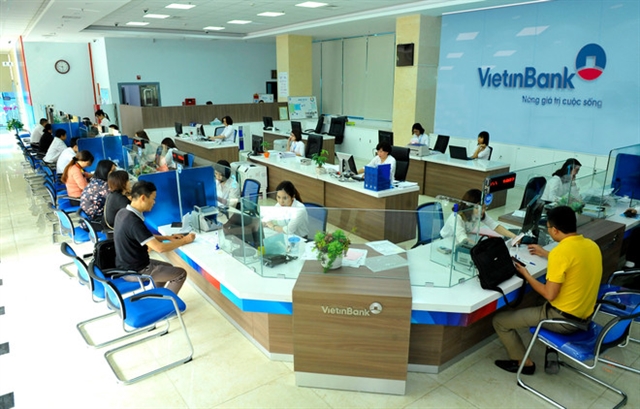Although outstanding loans to US-exporting customers are low, joint-stock banks remain cautious about possible indirect effects from US tariffs on Vietnamese goods, SSI Research says.

HCM CITY — Though outstanding loans to customers who directly export to the US are relatively low, joint-stock banks remain cautious about potential indirect impacts caused by that country’s tariffs on Vietnamese goods, according to SSI Research.
In a report it recently released on the banking sector's outlook, the company said banks were cautious during the 2025 annual general meeting season (AGM).
The joint-stock banks surveyed expect pre-tax profits to grow by 17 per cent.
But among state-owned banks, only Vietcombank has had its 2025 profit plan approved, and it envisages a modest increase of 3.5 per cent.
One of the key concerns raised is the potential impact of the US’s tariffs.
Some lenders, notably TPBank, indicated that the average profit margin for customers exporting to the US is currently around 10 per cent, and if the new tariffs raise costs beyond this threshold, many could be adversely affected.
While banks reported that the ratio of their loans to customers who directly export to the US is relatively low at only 0.6-1.9 per cent of total credit, they remain cautious about indirect consequences.
These concerns mainly revolve around weakening consumer demand and escalating global trade tensions.
But the extent of the impact remains difficult to quantify at this stage.
State-owned banks are adopting a more cautious approach, largely due to their close ties with foreign-owned enterprises.
For VCB, they account for 10 per cent of total outstanding loans.
As a leading player in trade finance, with an estimated market share of around 20 per cent, VCB, and other public banks, could face more difficulties if global exports decline.
They are therefore readying risk management strategies.
The report said narrowing net interest margins is also a major topic of discussion among banks.
Competitive pressures have intensified, especially following the launch of attractive mortgages by public banks targeting borrowers under 35 years, offering fixed interest rates of 5.5–6 per cent for the first three years.
The rates are around 8 per cent at large joint-stock banks and 9–10 per cent at mid-sized ones. To retain high-quality retail customers, many have had to sacrifice part of their interest margins, potentially creating further pressure on profitability in the medium term.
A notable new trend in this AGM season is the move towards expanding operations under a financial conglomerate model.
Banks such as Vietnam Maritime Commercial Joint Stock Bank (MSB) and Saigon Thương Tín Commercial Joint Stock Bank (STB) have announced plans to acquire securities firms to enhance their financial ecosystem.
Despite ongoing economic challenges, margin lending activities saw remarkable growth of 46 per cent in 2023 and 41 per cent in 2024, driving strong performances by securities companies.
To capitalise on this trend, several banks are raising capital for their affiliated securities firms or establishing new entities to expand their margin lending capacity and advance the financial conglomerate model.
Additionally, banks are planning to establish insurance subsidiaries to boost fee-based income and reduce dependence on interest income, a key strategy amid intensifying competition.
In general, SSI Research observed that banks are preparing for a challenging 2025, with increasing external uncertainties due to trade disruptions and internal pressures from narrowing interest rate margins.
Banks with strong capital buffers, competitive funding costs and high asset quality would be better positioned to sustain growth compared to their peers in 2025, it concluded. — VNS





